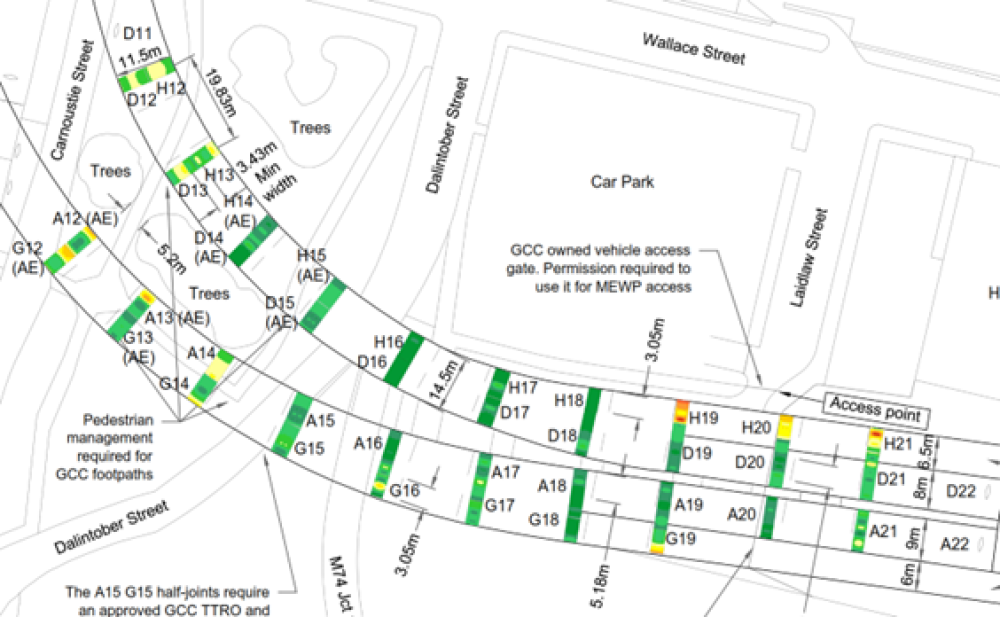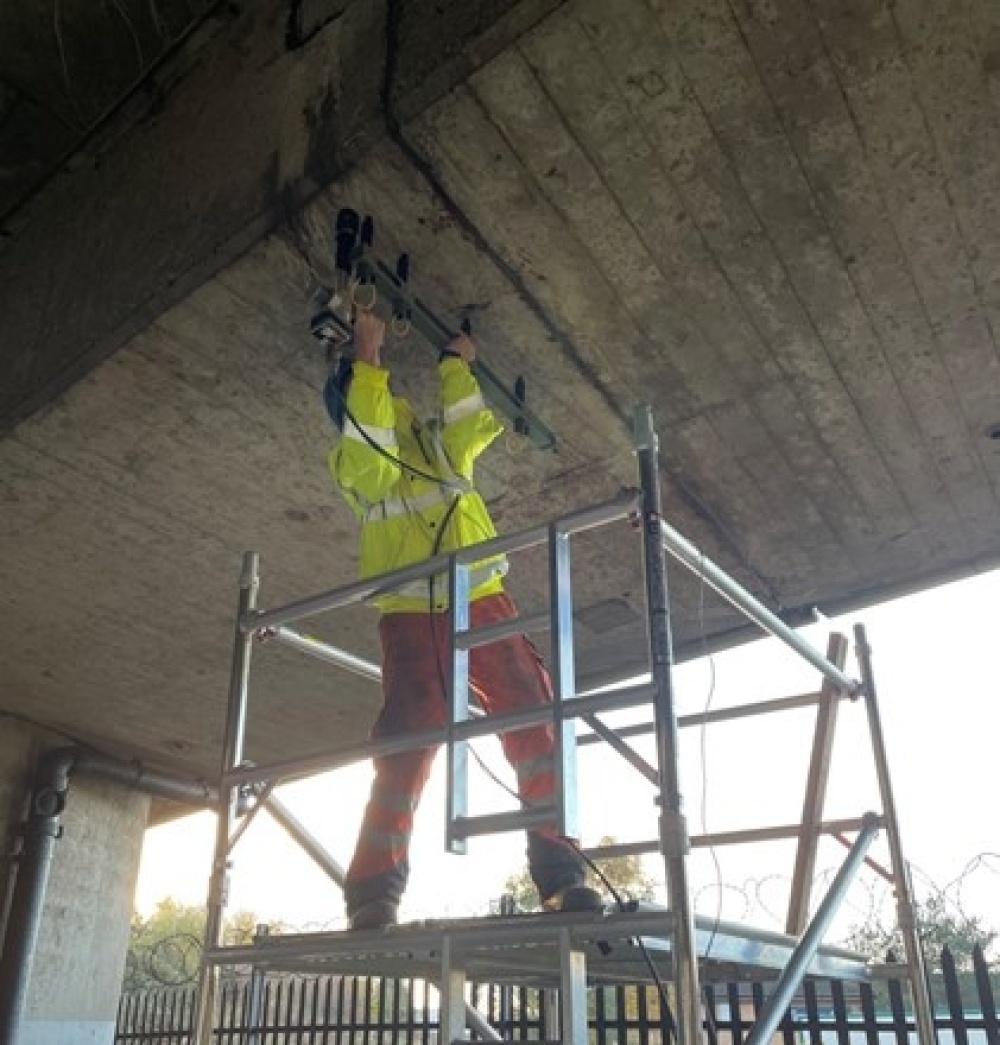Assessing Half-Joint Condition on Bridge Ramps Using Non-Destructive Testing | Glasgow, UK

Services Applied by VCS Engineering

Project Description
VCS Durability conducted non-destructive testing (NDT) acoustic measurements of the half-joints along the M8 West Street on and off ramps in Glasgow, Scotland. A half-joint is a superstructure bridge joint in which there is a cantilever section of the superstructure that extends from each pier and then the middle span is dropped in and supported by the cantilevers. Where the middle span is supported by the cantilevers there is a half-joint. Half-joints are a critical structural element in a bridge’s superstructure, and assessment of half-joint condition is critical in proper bridge management and preservation.
Scope
VCS was hired to perform NDT acoustic testing to assess the condition of these half-joints. The NDT method implemented by VCS was impact echo (IE) and pulse velocity (PV). IE/PV analyzes the frequency and velocity of stress waves which are created in a concrete element under investigation. How the stress waves reflect, and their speed can provide information regarding the internal condition of the concrete and the presence of defects or deterioration.

Project Solution
Using the IE/PV testing method VCS performed testing on 38 half-joints. At each of the half-joint VCS collected a series of measurements to determine the thickness of the half-joint and in-situ concrete compressive strength. Half-joints with thickness that are less than designed are an indication of cracking and delamination in the half-joint concrete. Also, half-joints with low concrete compressive strengths indicate significant cracking or voiding in the concrete. VCS was able to identify the deteriorated half-joints and provide a map to the owner indicating where the areas of deterioration are.